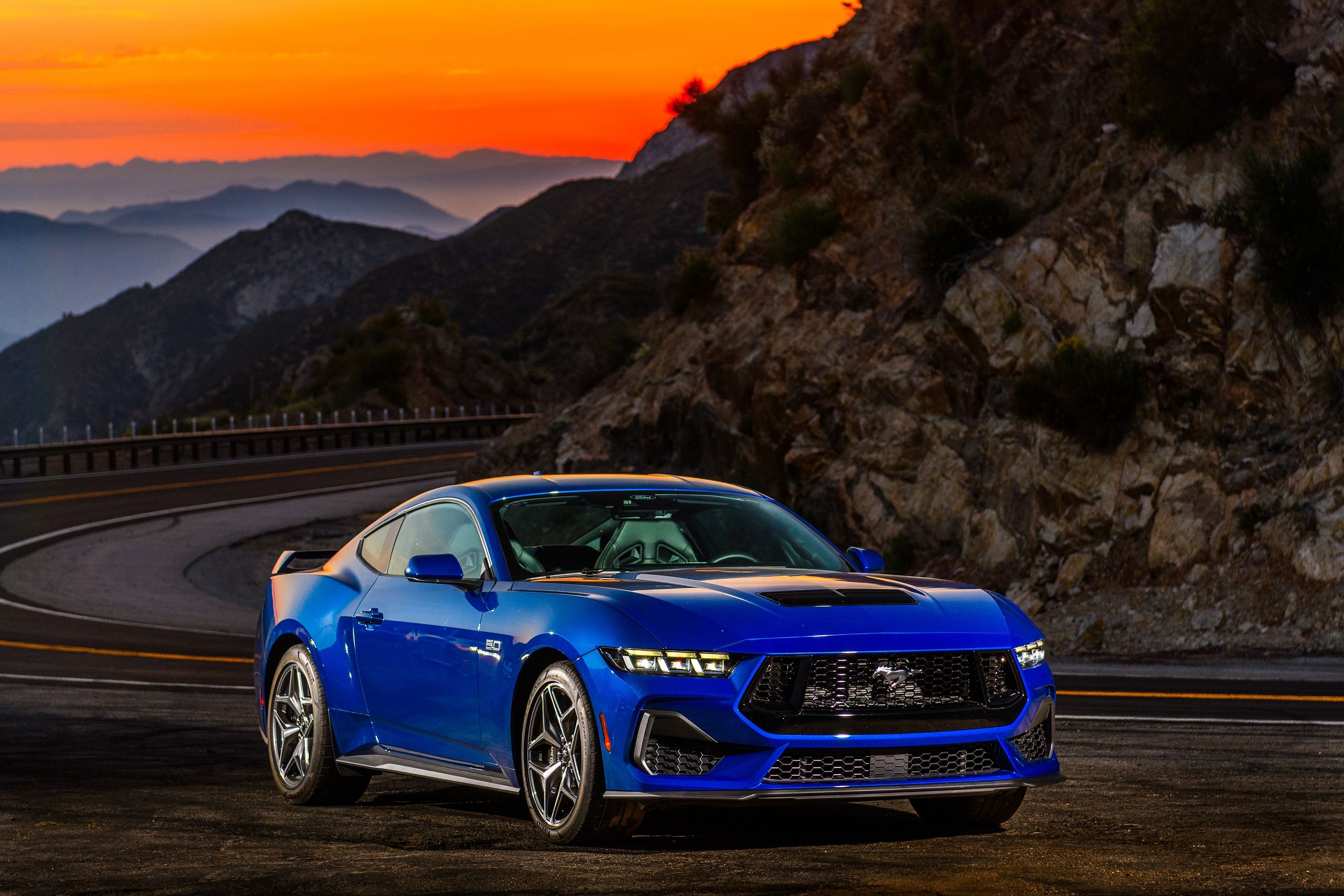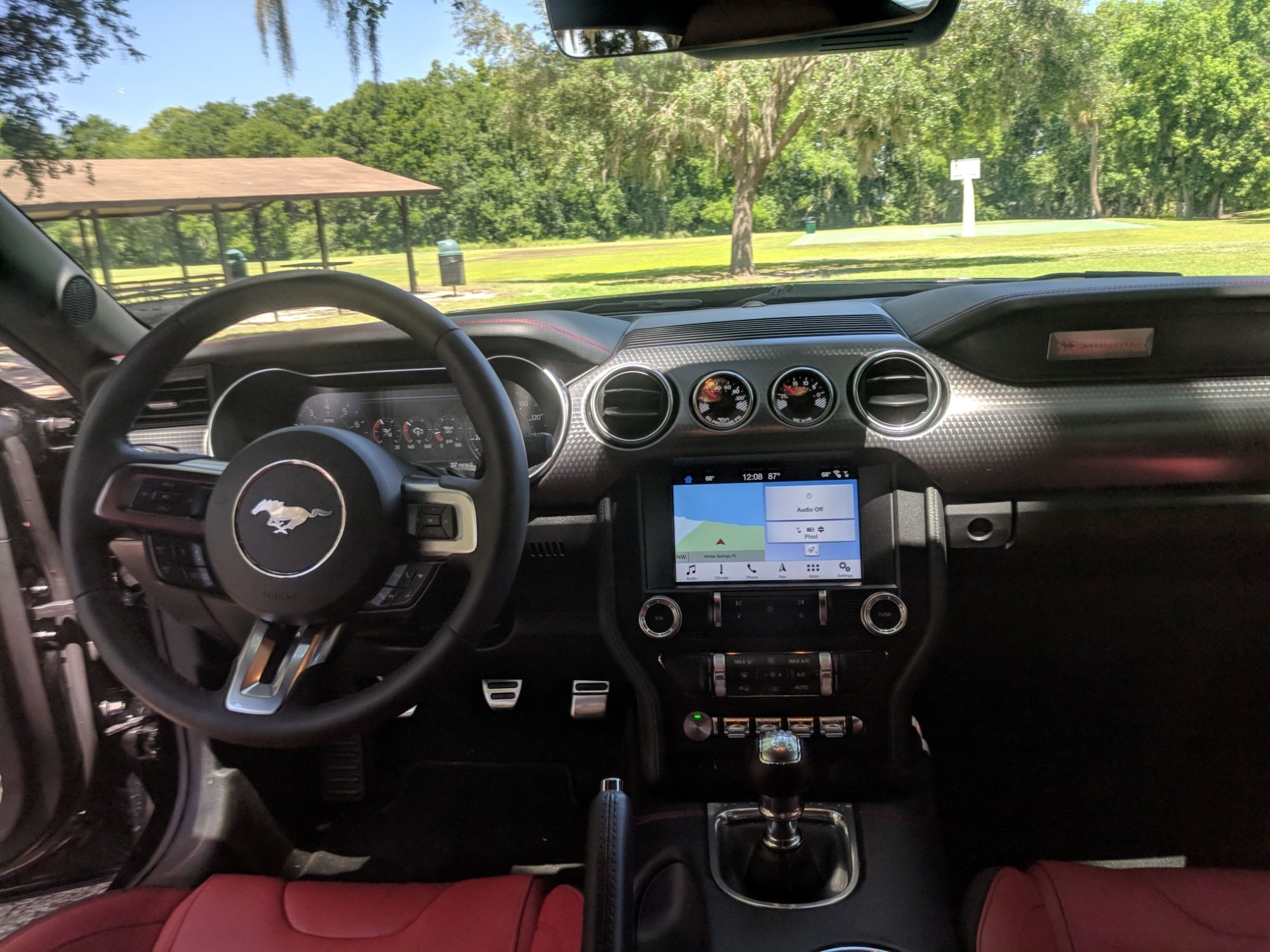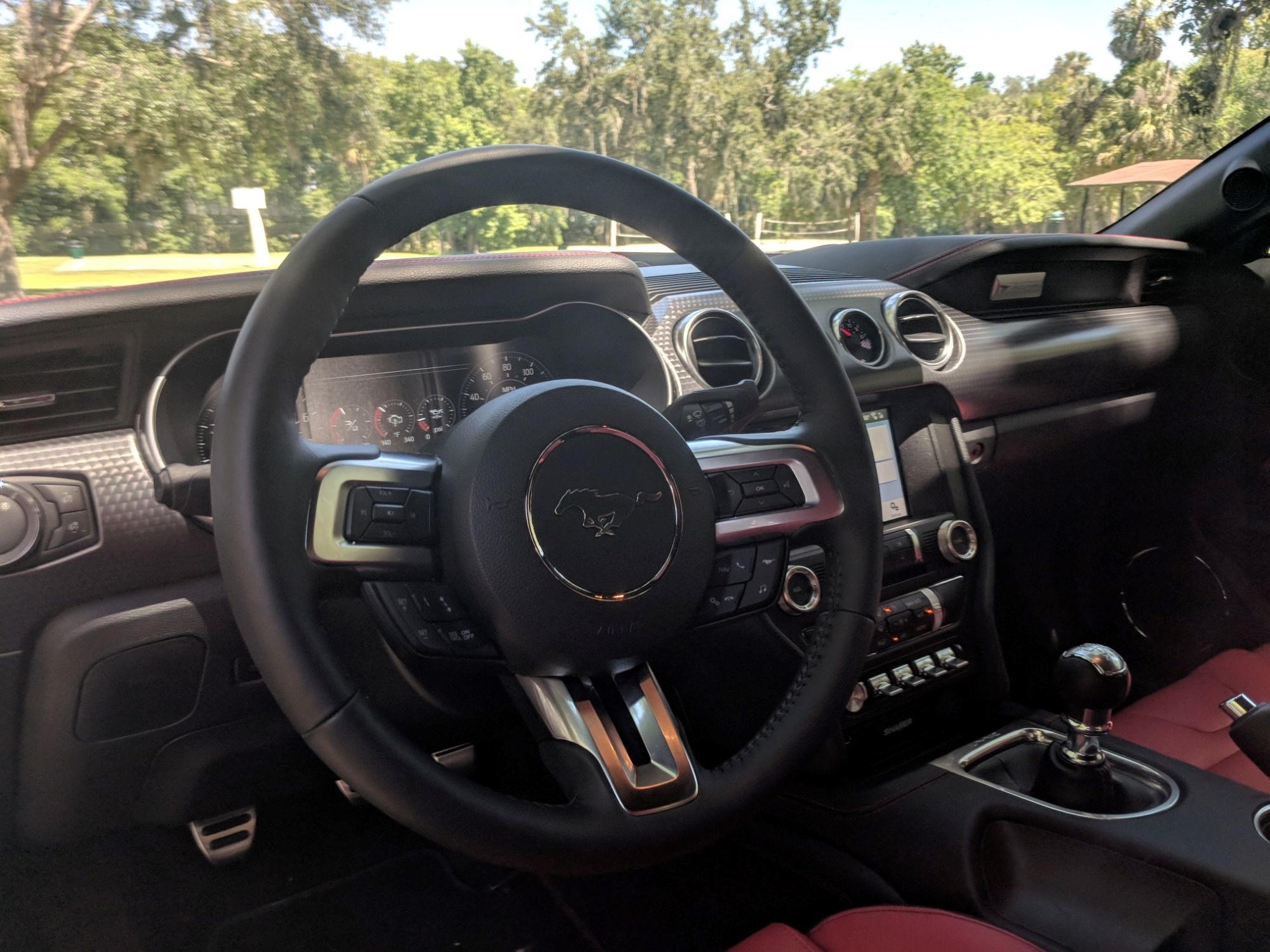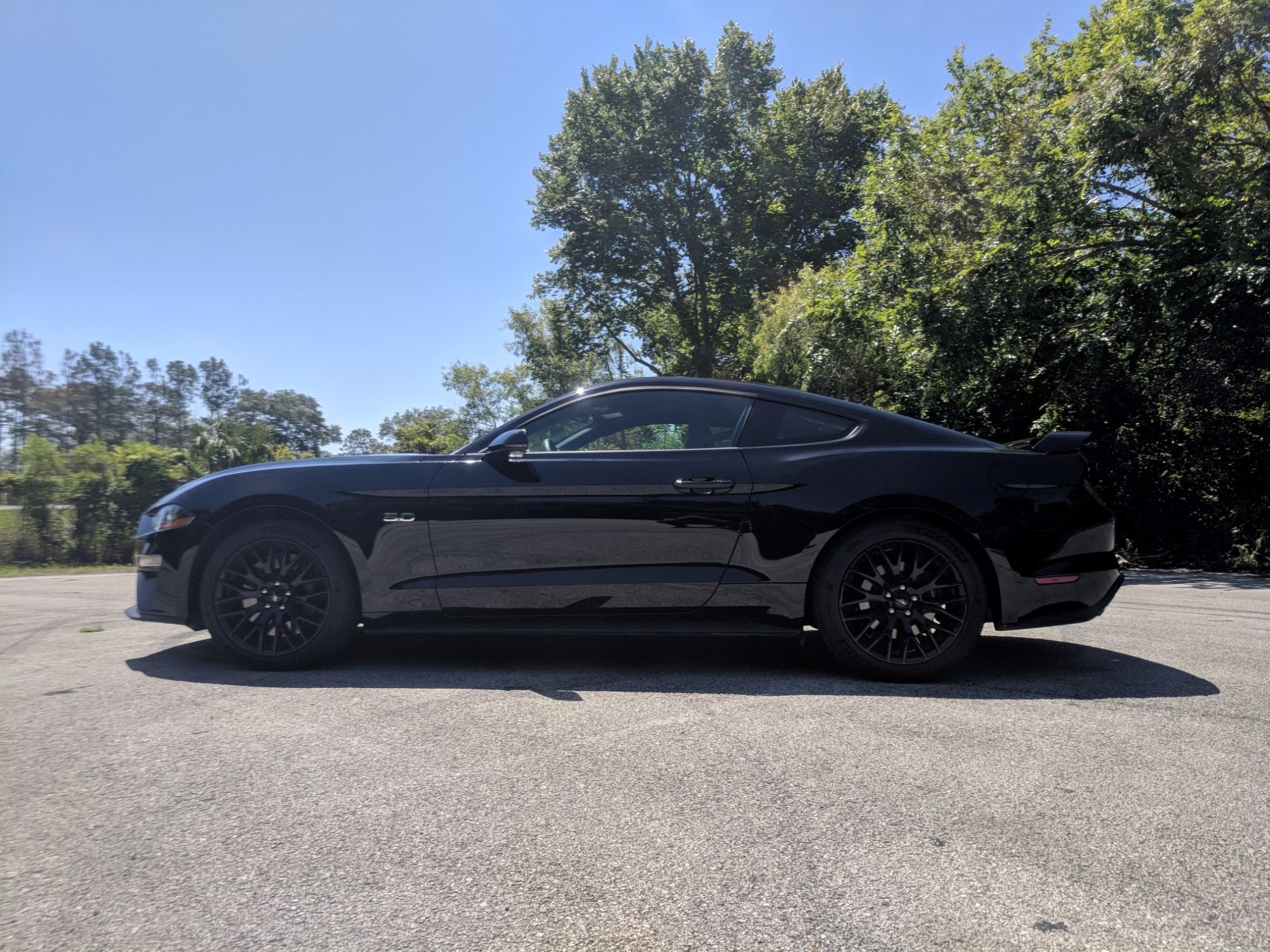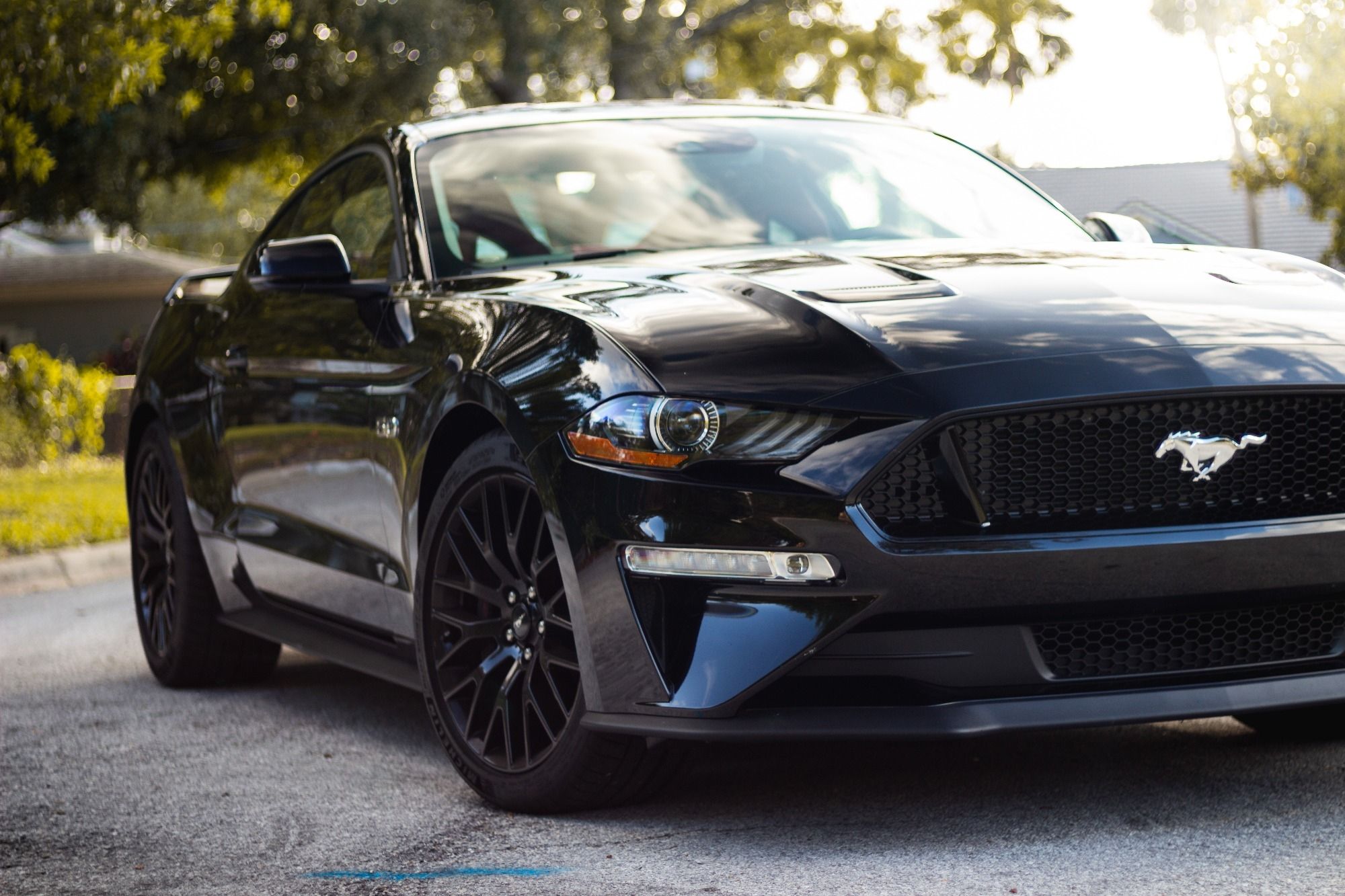2019 Ford Mustang GT Test Drive Review: A Snake With The Heart Of A Stallion
Due to an unfortunate string of incidences involving crashes at Cars & Coffee events, the Ford Mustang has been the butt of jokes within the automotive community for a few years now. Ford clearly has a thick skin, because it hasn't let the actions of a few dictate its philosophy for the Mustang moving forward. In fact, Ford has continually made improvements to its flagship sports car, edging it closer into a realm once reserved for six-figure European cars. All of Ford's hard work has culminated in the newly refreshed 2018 Mustang GT.
Ford introduced the current, sixth generation Mustang back in 2015, but has given the car a major refresh for the 2018 model year. The 2018 model is not an all-new car, but the Mustang now has a fresh face, some lovely interior upgrades, and a significant boost in performance, but I'll get back to that later.
It's easy to tell the 2018 apart from last year's model thanks to the revised front end, which looks a bit softer and more luxurious to my eye. Others may prefer the look of the 2017 model, but with the polarizing design of the 2019 Chevy Camaro, I'll chalk Ford's efforts as a win. Ford has continually brought the Mustang closer into the stomping grounds of the Europeans, but it first has to deal with the Chevy Camaro, which has been crushing comparison tests against the Europeans. The Camaro has been particularly dominant when tested in the track-ready 1LE trim.
In order to beat GM around the track, Ford has introduced two optional performance packages for the Mustang, both of which borrow elements from the Shelby GT350R. My Shadow Black test car was a GT Premium trim, which carries a starting price of $39,095. For just under $40,000, many buyers will be content with the Mustang's 5.0-liter V8 that develops 460 horsepower and 420 lb-ft of torque (a significant increase over the 2017 model's 435 hp and 400 lb-ft of torque). Considering most German cars making this much power start at around $65,000, the Mustang represents good value for money.
The premium trims adds plenty of luxury elements that you'd expect to find on high-priced German cars, including: dual-zone automatic climate control, leather seats with heating and ventilation, and Ford's excellent Sync 3 infotainment. Other than a few areas such as the headliner, the interior feels remarkably upscale. Only when you poke around at a few flimsy trim pieces can you tell that Ford had to cut one or two corners to keep the price down. Compared to the Camaro interior, which feels a bit like a plastic jail cell, the Mustang's interior was truly a nice place to sit for the price. Unfortunately, my test car wasn't exactly cheap, and was fitted with a few options - $13,165 worth of them to be exact.
Around $5,000 of options came in the form of technology and safety features such as navigation, blind spot monitoring, lane keep assist, Shaker Audio and adaptive cruise control. In most other vehicles, these would have been welcomed options, but they just felt out of place and a bit distracting in the performance-oriented Mustang. The other roughly $8,000 came through performance options, all of which add up to transform the Mustang into a miniature Shelby GT350 - albeit without the screaming Voodoo engine.
The GT Performance Package costs $3,995, and brings in 19-inch black wheels with P255 front and P275 rear Michelin Pilot Super Sport tires, a performance rear wing, six-piston Brembo brakes, and a 3.73 Torsen rear axle. My test car also had a few additional performance options including a must-have active valve exhaust ($895), leather Recaro seats ($1,595), and Magne-Ride dampening suspension ($1,695). The Mustang GT approaches Shelby levels of performance with these options. Unfortunately, it also approached the Shelby on price, because my test car was $52,260 as tested. Just $4,000 more would buy you a faster, but less equipped Shelby GT350.
0-60 mph is dealt with in just 4.3 seconds with the six-speed manual found in my test car, and that time shrinks to around 3.8 seconds with the 10-speed automatic. With so much power on tap, I feel confident saying the 10-speed automatic is probably a fantastic option if you don't want the manual. After driving the six-speed for a week, it is easy to be tempted to take the slower, but more involving manual. The clutch is heavy, but never felt tiresome in traffic, though the high bite point made it tricky to get used to for the first few days. After driving it for a few days, the notchy six-speed became a joy to use.
In fact, almost all of the performance options on the Mustang were a joy to use. The active valve exhaust is a must have for $895. It includes four modes, allowing the driver to silence the Mustang to an inaudible rumble, then unleash the trumpets of hell at the press of a button. Likewise, the Magne-ride suspension responded well to rough road surfaces at speed, but felt stiff at slow speeds. The only performance option I'd have to think about is the Recaro seats. These heavily bolstered chairs were just large enough not to be uncomfortable, but can be difficult to get in and out of. Opting for the Recaro seats also deletes heating and ventilation, which is a sacrifice some enthusiasts may be willing to make.
With the Performance Package equipped, the Mustang GT will be able to keep up with the best AMG and BMW M can throw at it. The Mustang did understeer slightly at the limit, though it could easily be fixed with a boot full of throttle. Body lean was present enough to be enjoyable, and the Recaro seats hold you in to make the Mustang a serious track weapon. Even with the Performance Package, the Mustang will be defeated on track by a Camaro SS with the 1LE package. Hence why Ford also sells the Performance Package Level 2 for $6,500. Level 2 includes the Magne-ride suspension as standard, and increases the tire size to 305 Michelin Pilot Cup 2 tires on all four corners.
The slick tires wrap around package-unique wheels, along with a track-tuned chassis, spring and sway bars that were inspired by the Boss 302 Laguna Seca. Unfortunately, this package wasn't available for CarBuzz to test, though it will likely make the Mustang a better match for the 1LE on the track. In terms of steering feel, GM's Alpha platform cars feel more connected to the driver, and the Camaro does hold the weight advantage by around 200 pounds. As a daily driver, we prefer the well laid out cabin of the Mustang to the cheaper feeling Camaro, though the Mustang does have some faults of its own.
New for 2018 is a 12-inch LCD display, which replaces traditional gauges in the instrument cluster. The display looks fantastic, and is highly customizable. Drivers can even change the color of the instruments from a number of preselected shades, or even create their own. The amount of customization is a bit dizzying at first, and it doesn't stop there. The Mustang is starting to reach BMW M car levels of customization, which isn't necessarily a good thing. Drivers who are stepping out of an older M car will feel right at home, but traditional Mustang owners may not love how many buttons it takes to set the car up the right way.
In front of the shifter, classic toggle switches control the steering and drive modes independently. The driver can choose from three steering modes – comfort, normal, and sport - none of which match the joy felt in the Camaro or even a Mazda Miata. Comfort mode is handy for coming back from the gym, but I left the steering in normal mode most of the time. Sport mode increases the steering weight, but doesn't add any feedback through the wheel. All three modes can be changed while driving normal mode, or can be tied in automatically with the drive mode selector.
There were simply too many modes: Normal, My Mode, Sport +, Track, Drag Strip, and Snow/Wet. Since the toggle switch only moves in one direction, you have to cycle through all of the modes just to get the one you want. As you change modes, the display changes to show different tachometers, which was a nice touch. The drive modes completely transformed how the Mustang felt to drive. Normal more felt docile and control, while track mode dialed back the traction control to imperceptible levels. My issue wasn't with the drive modes themselves, but with the sheer number of them. A BMW-style M button to quickly enter the perfectly catered mode would have been a welcomed touch.
Other than the baffling amount of customization, my list of faults with the Mustang was extremely brief. Trunk space was massive for a two-door car at 13.5 cubic feet, and folding rear seats allowed for even more cargo space. Unfortunately, the rear seats were severely limited in headroom. I am only 5'8", and struggled to sit in the back. Compared to most two-door sports cars, the Mustang is a remarkably comfortable and affordable package that can now go toe-to-toe with the best Europe has to offer. I still prefer a bit more finesse in my sports car, but it's hard not to love the rumbling sound of that Coyote V8.
The only time the sound will ever get old is when you constantly have to fill the tank when you struggle to match EPA fuel economy ratings of 15-mpg city, 25-mpg highway, and 18-mpg combined. I averaged around 17-mpg in normal driving, and around 10-mpg during spirited drives. If you are the type of person who looks at a stat sheet and sees 460 horses for the same price as a German car with 100 hp less, the Mustang is an easy choice. However, if you put a premium on steering feel and quality cabin materials, you may be better off with something from Europe - but good luck finding something that sounds this good.

